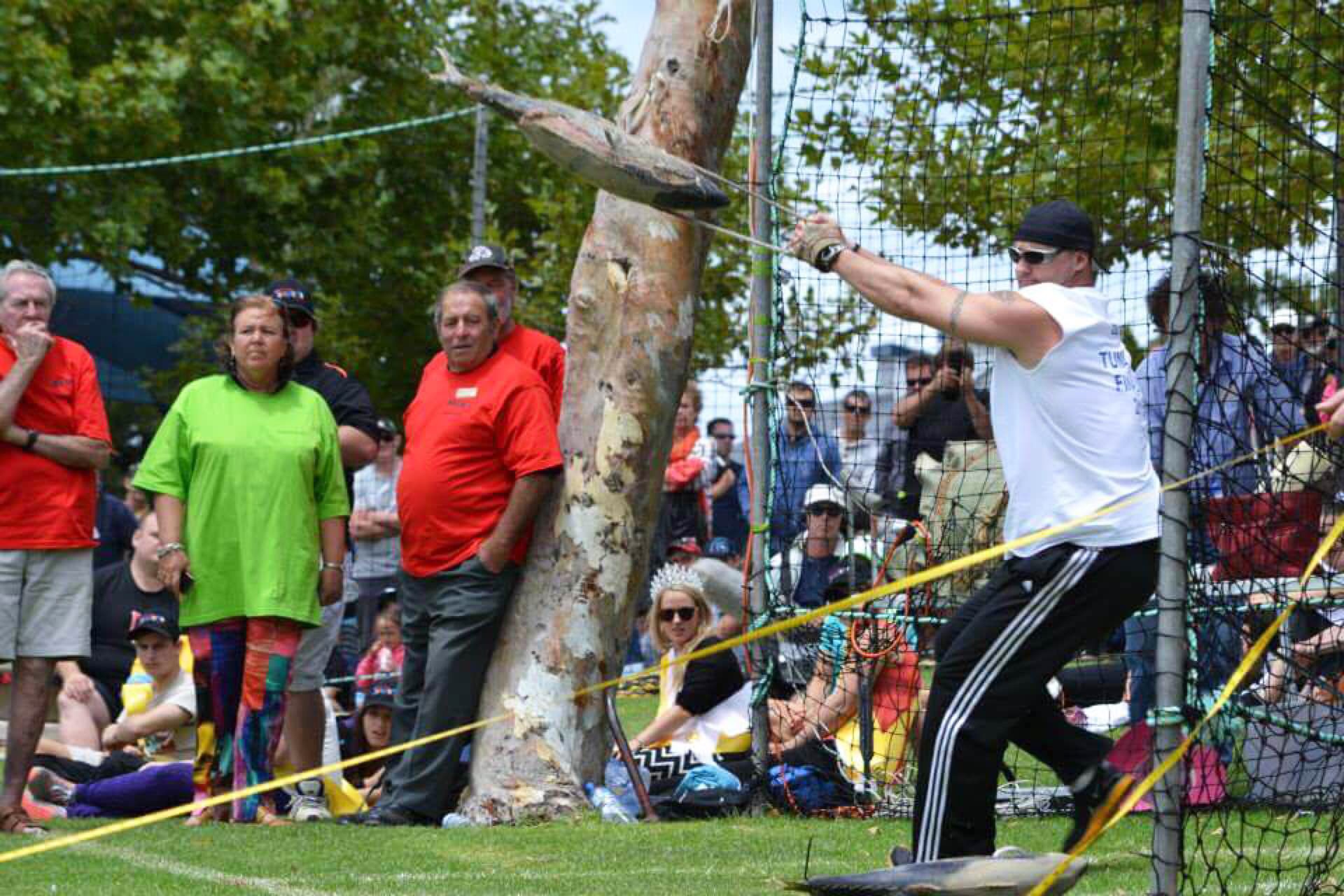How to Win a Tuna-Throwing Contest
 Jackie Hockaday, who tossed the tuna 11.12m to become the 2014 winner. (Photo: Courtesy Tunarama Festival)
Jackie Hockaday, who tossed the tuna 11.12m to become the 2014 winner. (Photo: Courtesy Tunarama Festival)
To throw a tuna, be prepared to hold the fish by the tail and spin. That’s the way it’s done in the city of Port Lincoln in South Australia where “tuna tossing” isn’t just some unconventional salad preparation. The tuna toss is part of an annual festival called Tunarama that celebrates the town’s seafaring history—and the wealth it’s created.
If Port Lincoln is known for anything, it’s seafood. This small seaside town of 14,000 may be geographically isolated but has the largest fishing industry in the country. Reputedly, the prevalence of high value fish like southern bluefin tuna has helped the city go from a sleepy port town into a place with the highest number of millionaires per capita. Richard Ellis writes in his book, Tuna: Love, Death, and Mercury, that nearby Japan buys “the entire catch of the Port Lincoln tuna fleet”. As Japan’s demand for fatty bluefin tuna rose, so too did the income of tuna fishermen—often referred to as “tuna barons.”

Matt Staunton, 2015 winner. (Photo: Erin Staunton)
In 1962, the town decided to create a festival at the same time of year the fishing fleet was put out to sea—on Australia Day weekend at the end of January. This being the southern hemisphere, the timing puts it right in the middle of the continent’s summer.
By 1979, festival promoters decided that the annual Tunarama needed an extra kick. Something that was flashy but also related to the town’s fishing business. At the time, the method of unloading fish from the boats was a very hands-on job. As the official Tuna Toss history states, “Men would stand on the decks of the boats, and throw tuna up onto the waiting trucks.” Hopeful fishermen were often hired on the basis of how far they could throw one of these slippery tuna that weighed an average of 20 pounds. The best got to work; the rest went home. The festival committee decided to rebrand this trial as a “local sport” and add the tuna toss to the lineup of events at Tunarama.
;
From the first year, it was a great success. Now there’s also the lightweight “prawn toss” for five- to ten-year-olds.
Unlike the fishermen, festival tuna tossers didn’t have to grab fish by their tails (or wherever they could find enough traction to get a good grip) but rather had a rope handle attached to the tuna. For almost the first 30 years of the festival, they used real frozen fish that were too small or otherwise unsuited for market. Though the hard freeze kept tuna from exploding on impact, they certainly looked a bit worse for wear as the competition days wore on. But the collapse of tuna stock and concerns about wastefulness prompted the festival to work with a local artist to create comparable tunas made from polyurethane in 2007.
Okay, but what does it actually take to throw a long-distance tuna?
Matt Staunton is a four-time tuna tossing champion (he and his wife Shanell Staunton won the men and women’s titles in 2015) who credits his background as a hammer thrower with his success. Ideal tuna tossing form is so similar to hammer throwing, says Staunton, that “it’s all the preparation you need” In both cases, the ideal method seems to be spinning in a few circles to gather up some velocity and letting the tuna fly at the ideal moment. The current record-holder is Sean Carlin, an Olympic hammer thrower from Adelaide. He managed to throw a tuna 37.23 meters (or 122 feet) in 1998—a record that still stands today.

2015 winner Shanell Staunton. (Photo: Erin Staunton)
 The 2015 victors. (Photo: Erin Staunton)
The 2015 victors. (Photo: Erin Staunton)
Yet not everyone has professional training that might help them make their fish fly.
Staunton’s family has lived in Port Lincoln for 70 years and he grew up going to Tunarama. He says that spectacular tuna blunders are kept mostly to a minimum but people commonly fall over after taking their legs out from under them. “There’s also been a lot of people who try to spin it around their heads,” Staunton adds. In 1989 the festival was actually sued when a spectator was hit by a 17 pound frozen tuna and wound up in the hospital. So watch at your own risk.





Follow us on Twitter to get the latest on the world's hidden wonders.
Like us on Facebook to get the latest on the world's hidden wonders.
Follow us on Twitter Like us on Facebook